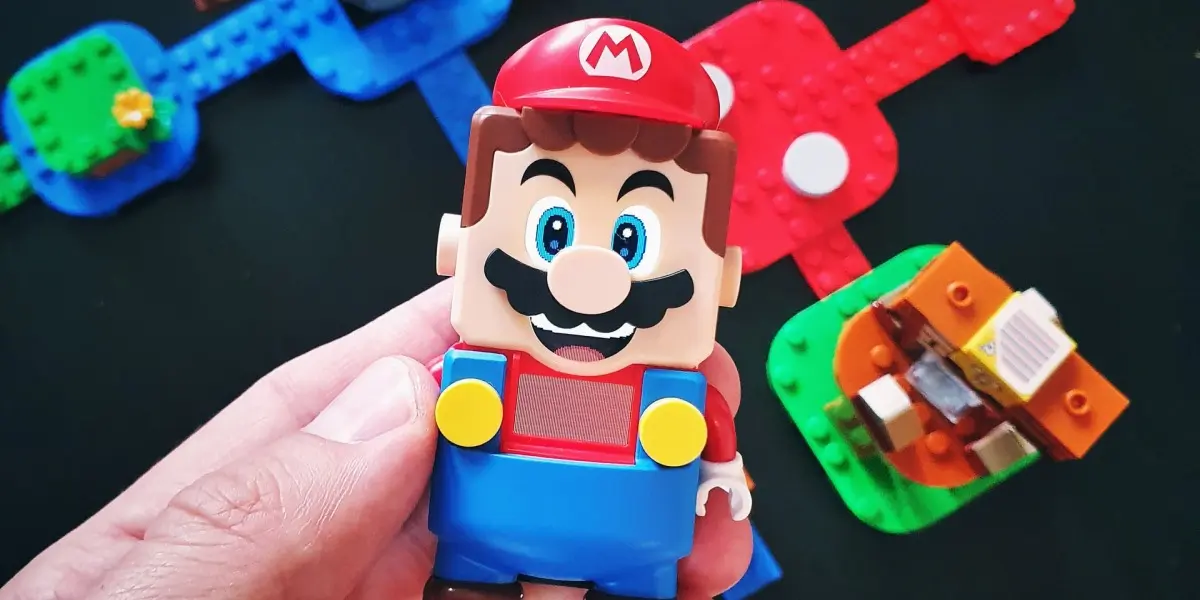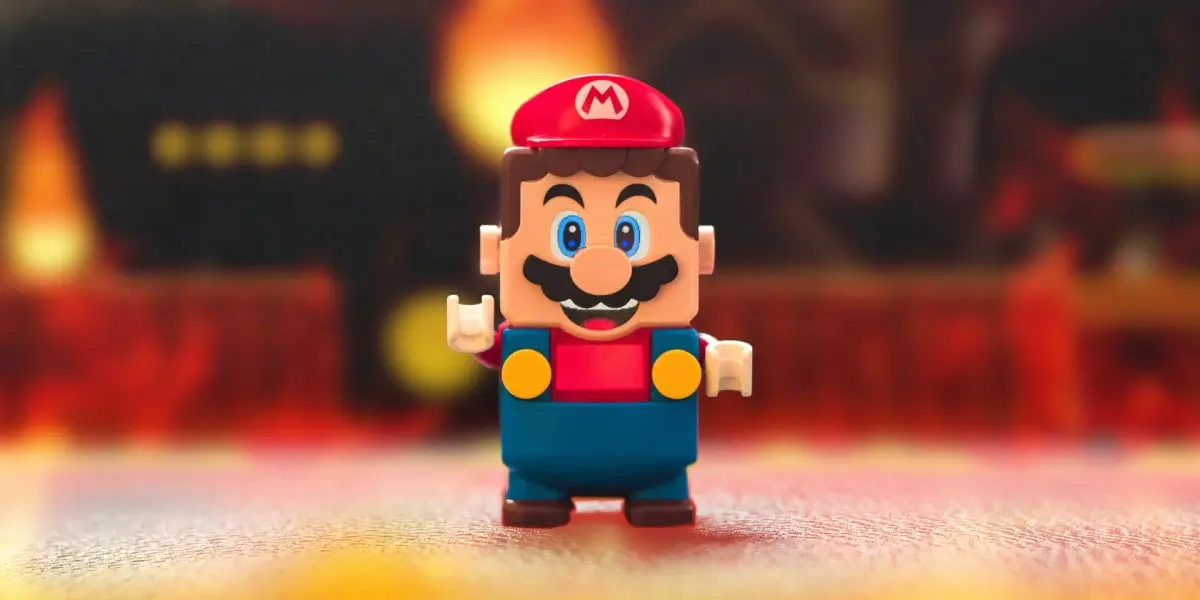User experience is a term with many implications.
Nowadays, when people hear “UX designer”, they often think of a web and application designer, a visual designer, or someone working for a big tech company somewhere. UX is not often thought of outside the digital realm and it has a strong association with things like website curation, mobile apps, and interface design.
So, is UX design only applicable to digital products? Can the scope of a UX designer’s skills be extended to the physical realm? If so, what are some examples of UX outside of the tech industry, and what does the future look like for non-digital UX design?
Let’s take a closer look. If you’d like to skip ahead to a certain section, simply use the clickable menu:
- Is UX design exclusively digital?
- UX and non-digital products: LEGO case study
- UX in non-tech industries
- UX in the non-digital world and beyond
1. Is UX design exclusively digital?
Definitely not. While its roots are planted in the digital world, the notion of UX being an exclusively digital convention is misleading and limits what types of products this great design method branches into.
At this point, UX designers are generally designing for cyber experiences. However, as UX grows and evolves, its practices are proving easily applied to many multimodal experiences as well, such as physical, voice, and gesture.
Furthermore, the holistic approach UX takes to product design can extend far beyond solely tech and into industries like healthcare, social justice, environmentalism, business, and entertainment.
Even when UX designers typically design a digital product, the user’s experience outside of the online one is taken into account. For instance, user research typically seeks to understand a user’s demographic background, day-to-day life, and past experiences.
Using this info, a designer may make a user journey map that often starts before the user has even interacted with the digital product and ends well after they’ve stopped using it. It’s this ability to empathize with both a user’s online and offline experience that helps UX transcend the digital realm.
Now, let’s dig a bit deeper into how UX can be applied to non-digital products and industries and what exactly that looks like.
2. UX and non-digital products: LEGO case study
To elaborate further on how UX intertwines physical and non-physical experiences, let’s see how a UX designer might help to develop a new internet of things (IoT) product.
To make this example fun and concrete, we’ll look at LEGO’s Super Mario sets, a highly interactive physical product whose pieces pair to a LEGO Super Mario app.

Before a UX designer would join the team developing a product like LEGO Super Mario, usually some research has been done by a marketing team that has determined the desirability and viability of making such a product.
Therefore, the first step a UX designer might take would be to map out the customer’s journey with their LEGO set, from browsing the web for it to using it continuously in their home.
UX designers will have to look at who the Super Mario customers and users are and what both their online and offline experiences have been with LEGO and similar companies. They’ll clarify any business goals LEGO has for this product, what resources are available, and the deadlines they must meet. Then, it’s time to get into the user touchpoints.
We’ll break this Mario-loving customer’s journey down into five phases. Notice that for each phase, we’ve listed whether the experience will be a digital (D) or non-digital (ND) one.
- Shopping and ordering (D)
- Receiving and unboxing (ND)
- Registration and setup (D)
- Connecting to network (ND)
- Ongoing usage (D/ND)
1. Shopping and ordering (D)
At this point, a UX designer will consider the user that will interact with LEGO’s website in order to purchase the Super Mario set. It may be the same person who will interact with the physical product or a parent, guardian or another family member of the LEGO user.
UX design methods will be employed to design, test, and evaluate whether the Super Mario set is easy to find, its product page is quick to view and understand, and the purchasing experience feels enjoyable and secure.
All major paths to purchase are assessed for maximum conversion rates and customer satisfaction.
2. Receiving and unboxing (ND)
Here’s where UX designers get to help design the out-of-box experience users will have when first receiving the physical product. An analysis is done on LEGO’s top competitors for their packaging and unboxing trends in order to gain an understanding of what users may expect and how to elevate their experience even further.
Then they’ll get to work on creating a packaging masterpiece. If you’d like to get a sense of what that’s like, this LEGO Super Mario Starter Set unboxing video will help:
Once the ideas are pitched, the packaging designs are prototyped and user-tested. Feedback gathered during user testing will then guide the design team to make the necessary adjustments to give the already excited users even more delight as they unveil their new purchase.
Furthermore, the UX team may help design product instructions, making the copy and visuals accessible and easy to interpret.
3. Registration and setup (D)
The exciting thing about the LEGO Super Mario set is its interconnectivity. Not only are the Mario character figures battery powered for fun visual graphics and gameplay, but they also have Bluetooth ability to connect to the LEGO Super Mario app.
This Bluetooth feature requires LEGO’s UX team to design the setup and registration process via the mobile app. They will conduct research on what users expect from such a process and how to improve it. A UX copywriter may be called upon to ensure the written or voice audio instructions are clear and effective.
Information architecture specialists will work to ensure the registration and setup pages are intuitive and navigable and that all features are easily accessible. Designers with UI specialties will work to make the set-up visually pleasing and fun to complete.
4. Connecting to the network (ND)
This phase requires the UX design team to determine the most painless and natural way for users to connect their physical Mario set to the device they are using the app on. They may do in-home studies to determine how users already connect other Bluetooth devices they own and what they are most familiar with. This information is then incorporated into the designs.
For instance, the easily recognizable Bluetooth symbol has been added to a button on the back of each connectable Mario character so users can quickly intuit what that button is for and how they might use it.
The UX team will have determined what common button-pushing patterns for pairing are and what methods are preferred by their users. They will design wireframes for “Scanning for Bluetooth” screens, images, audio, and animations both on the app and the physical LEGO character as well as indicators that let users know pairing has been a success.
5. Ongoing usage (D/ND)
This final phase involves lots of testing, iteration, and assessment of each step taken previously in the design process. UX designers will look to see if all the phases flow well together and what the end-to-end user experience looks like.
Once they have a high level of confidence in the Super Mario set, they’ll compare the testing results they’ve obtained to the success criteria laid out previously. If everything checks out, the product designs are handed off to the development and engineering teams for launch.
Post-launch, UX designers will continue to track key business and user metrics in hopes to evaluate the success of the LEGO sets and how well it fulfills the user’s expectations. They’ll assess what the LEGO users like about the product, what doesn’t work well, and any frictions they encounter from purchasing to connecting to playing.
Any feedback obtained will be used to make upgrades to the shopping experience, packaging and unboxing, app set-up and use, or future physical Mario pieces.
With a brief layout of how UX can be applied to physical products under our belts, let’s take a broader look at other non-digital industries that benefit from UX design.
3. UX in non-tech industries
UX design is often pigeon-holed into something only used by big tech companies for their websites and apps. However, because UX employs standard design thinking methods to improve the entirety of a user’s experience with any product or service, its advantages can impact a wide variety of industries.
Next, we’ll discuss some of the top non-tech industries UX has the potential to impact with some examples of how it’s already being done.

Healthcare
The need for quality healthcare is ever-present in our lives as humans. The UX process has the potential to improve many of the touchpoints patients and providers encounter in their medical care experience.
From booking appointments, traveling and checking into the office, communication between patients and providers, as well as the medical equipment they use, UX designers could easily improve the physical and digital products patients and doctors interact with.
Furthermore, UX designers can lend their well-tuned knowledge of accessibility and inclusive design to improve healthcare for minorities and disabled users.
Examples:
Environmentalism
Sustainability and the climate crisis are projected to be in the top challenges facing our global community in the upcoming years. The expertise of UX designers has the potential to make a great impact on how we approach environmentalism and shift our society into an effortlessly, greener future.
Whether it’s via an app, service, physical product, or large-scale climate project, the empathy UX designers bring to their creative solutions is bound to be of use when attacking such a widespread crisis.
Examples:
Social justice
As mentioned previously, accessibility and inclusion are major principles in UX design. It’s easy to see how the skills UX designers hold would be able to positively change social justice systems across the globe, helping communities achieve equal access to the most basic human needs.
In partnership with governments, social services, and charity organizations, UX designers have assisted in programs that provide underserved populations access to clean drinking water, shelter, and food.
Examples:
Business and finance
For many years now, the disciplines of design and business have been thought of as separate. One is creative and artistic while the other is logical and clear-cut. However, as UX methodology continues to seep into diverse industries, the financial benefits it reaps are not going unnoticed.
UX design has already helped banks provide better services to their clients and the trend is predicted to continue as decentralized currency, online banking, and AI become further integrated into our societies.
Example:
Hospitality
Within the hospitality industry, the user’s experience is everything. Curating quality experiences for customers in hotels, dining establishments, theme parks, travel, conventions or other large events is paramount to the success of the company hosting these users.
What better team member to have than a UX designer. There are so many touchpoints to design for both digitally and in-person within the hospitality realm and UX designers are invaluable when it comes to creating memorable experiences worthy of telling their friends about.
Examples:
4. UX in the non-digital world and beyond
Our world and the people in it are rapidly evolving. We are constantly inventing new ways to achieve our goals and make the tasks of daily living more effective and enjoyable. To help make this possible, many industries are investing in UX designers to curate effortless and satisfying experiences with their products.
As things like AI, voice and gesture commands, and extended reality systems become more widely utilized in everyday items, the need for informed and empathetic UX design increases. These technologies being used, whether for digital products or not, are advanced and require careful thought when designing them to be user-friendly and intuitive.
As a result, the scope of what types of projects a UX designer can work on will widen, giving us the ability to step into a variety of industries and design for a range of eclectic products.
What next?
So now that you’ve seen how important UX design is not just if you’re going to be working with websites and apps, you might want to find out how to go about doing it. This free 5-day UX design short course is a great way to explore the basic concepts and tools involved in the discipline, to see if you might want to explore it further with a program or certification.
If you’re interested in reading more about UX design, check out these articles:
- What Is a Persona? Everything You Need to Know
- How to Be a Better UX Designer in 2022
- What Salary Will I Earn as a UX Designer?
Featured image: unsplash @boukaih
